This is a story about breathtaking beauty and devastating loss – about resilience, rebirth and the power of nature.
It’s a story that proves that even in the face of seemingly insurmountable odds, life always finds a way…
June 16, 2016
The morning dawns bright, breezy and warm – a perfect spring day in Umbria. We head out in a convoy, our colourful group of Paciano expats, over the Umbrian hills, through curvy mountain roads and narrow village passageways. Each car is laden with picnic baskets, bottles of wine and summer hats to shield us from the midday sun. We are off on a much-anticipated day trip to Castelluccio di Norcia and its world famous Great Plain or Piana of flowers.
Perched above the plain at 1452m – the highest elevation of any town in the Apennines – sits the lovely town of Castelluccio. The village dates back to about the 1300s but the region had previously been settled by the Romans. How they happened upon this remote, mountainous area and decided to build a settlement here is one of the many mysteries I love about Italy.
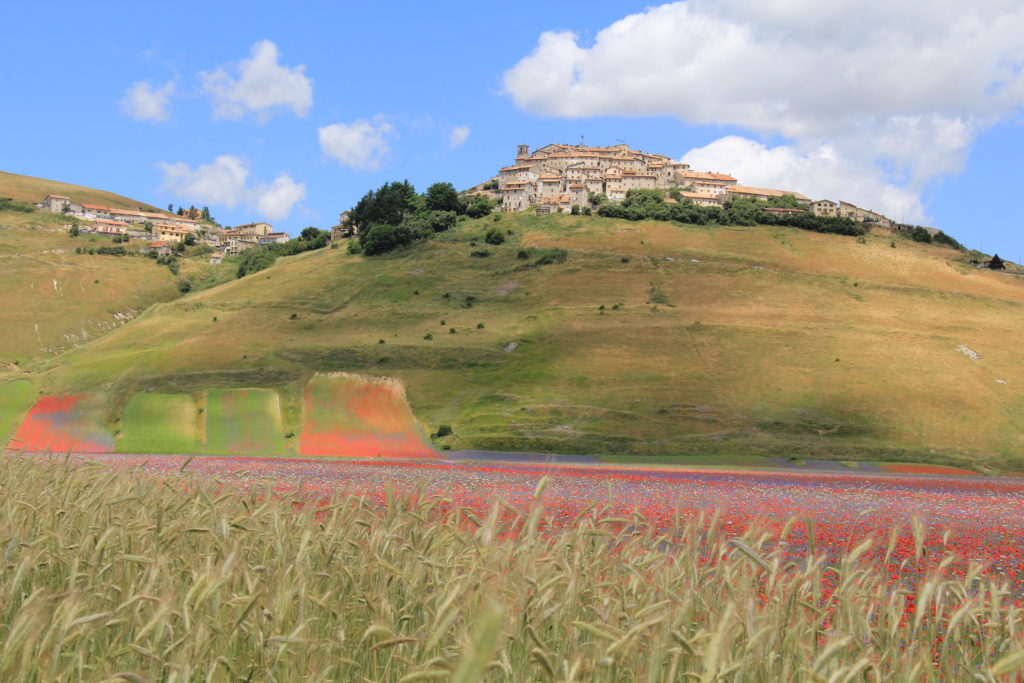
But there’s no question as to why people travel from all corners of the globe to visit this incredible Great Plain or Piano Grande. They come in the tens of thousands from the beginning of May to the end of July each year.
They come for La Fioritura, or the ‘blooming’ – to witness first hand what can only be described as one of nature’s most stunning displays – a vibrant, rich tapestry of flowers stretching as far as the eye can see.
They return time and again to walk through a real-life impressionist painting of red poppies, blue cornflowers and the delicate purple blooming lentils.
For eight weeks or so of the year, this massive plateau at the foot of Mount Sibillini National Park is awakened from the muted grays and dusty browns of its winter slumber into a spring mosaic of such incredible beauty and vibrancy that it never fails to take one’s breath away.
As our group emerges from our vehicles and we take in the vista before us, you can hear the collective sigh.
And what a photographer’s paradise!!
We find a clearing by an access road, set up our picnic blankets amidst the spectacular scenery and settle in for a lazy, potluck lunch.
Satiated by the food, the beauty and the fresh air, some of us nap. Then as the shadows lengthen and a long journey home lays ahead of us, we reluctantly pack up. It’s time to wrap up what has been one of the most memorable days of my life – surrounded by such indescribable beauty and the warmth of friendship.
On the way back through Castelluccio, the small town of 150 or so residents is heaving with tourists buying trinkets and of course their most famous treasure, lentils. I marvel at how such a small place can handle such crowds but am happy to see this ancient village so vibrant and clearly thriving.
Little did I know, that was all about to change…
October 30th 2016
In the early morning hours of October 30th, the residents of Castelluccio are waking. Shepherds are tending their flocks in the field. The day is off to a quiet, ordinary start. At 7:40am a shallow earthquake measuring 6.6 strikes just 6km from nearby Norcia. It is the strongest earthquake to hit the region in more than 100 years.
Over the next few hours, reports start trickling in of the devastation. Towns entirely wiped out, extensive damage in Norcia including to one of Umbria’s most spiritual sites, the Basilica of Saint Benedict. But it takes much longer for word on the fate of remote Castelluccio. When it arrives, the news is devastating. More than 60% of the town had been reduced to rubble, forcing the evacuation of all residents and the total closure of all road access in and out of the area.
Since that fateful day in October 2016, Castelluccio remains a shattered shell of a town, hovering high above the now silent plateau – the once vibrant village reduced to nothing more than a ghost town.

The stunned residents weren’t allowed into their homes to collect any precious items. They had to just walk away, many of them from the only homes they’ve ever known – uncertain if or when they could ever return. Most of the earthquake victims were sent to live in hotels in coastal towns and cities. Where they wait – still now almost three years later, for news that the rebuilding will begin.
One of Paciano’s villagers returned to Castelluccio with her daughter this past July. Here is her haunting account shared on Facebook. Thank you Leslie Busby for your evocative words and beautiful photos.
Ellie and I returned to Castelluccio di Norcia this week, our first trip back since the summer of 2016 and the terrible earthquake that struck a few months later. The wildflowers that make such an amazing spectacle each June and early July among the lentil and bean fields of the Piano Grande, an ancient lakebed more than 1300m in altitude, were barely visible, but beauty was abundant nonetheless in the smooth, sculpted hills, in the constantly changing cloud shadows, in the patches of colour here and there. What photos can’t capture is the purity of the air and the peacefulness of the birdsong carried by the breeze. It is still a magical place, one of Umbria’s greatest treasures. However, it was heartbreaking to see the village, an old farming village, behind its Zona Rossa no-access fencing, with soldiers standing guard and piles of rubble and remnants of broken homes and businesses everywhere, looking as if the earthquake had happened yesterday, not three years ago. “Ripartiamo da qui” – “we start again from here” – the brave and optimistic words of the wonderful people who saw their livelihoods crushed and many of whom lost their real homes in the quake that also devastated Norcia, the town where most of Castelluccio’s summertime population lives year round, and who now face years in temporary container homes. But their personal tragedies didn’t dim their smiles or warm welcomes to those of us just driving in for the day.
Today, the town remains closed to the public. There is still no access in or out of the village. But remarkably, there is life returning to Castelluccio di Norcia. The beloved Great Plain is emerging from its post earthquake trauma with the love and dedication of local farmers who refused to give up on her.
Despite local government’s decision to keep road access closed, a group of farmers protested, sleeping overnight with their tractors – insisting on the right to plant their lentil seeds as they have done since man first cultivated these plains.
And so in the shadow of their broken homes, they began sowing 50 tonnes of seed. And slowly, the vibrant hues of red, purple and gold have been returning to the Piano Grande.
Life does indeed find a way.
And now we can only hope that the return of the flowers of Castelluccio will plant the seed for the rebirth of the town – and finally allow her weary residents to return home.

I have often thought of that magical day we spent at Castelluccio. The richness and textures linger. So much so that I took my favorite photo Peter took of the stunning tapestry and had it turned into a painting.

It hangs on our bedroom wall. It is the last image I see when I close my eyes at night and the first to greet me in the morning.
For me, Castelluccio will always be beautiful, forever my field of dreams.
A presto
Anna
Note: Thank you to my talented husband Peter for these amazing photos. It is worth noting, not a single photo has been enhanced. All but the ones attributed to Leslie Busby were taken by him. And a big grazie mille to my sister-in-law Karen for turning Peter’s stunning image into an impressionist painting for me

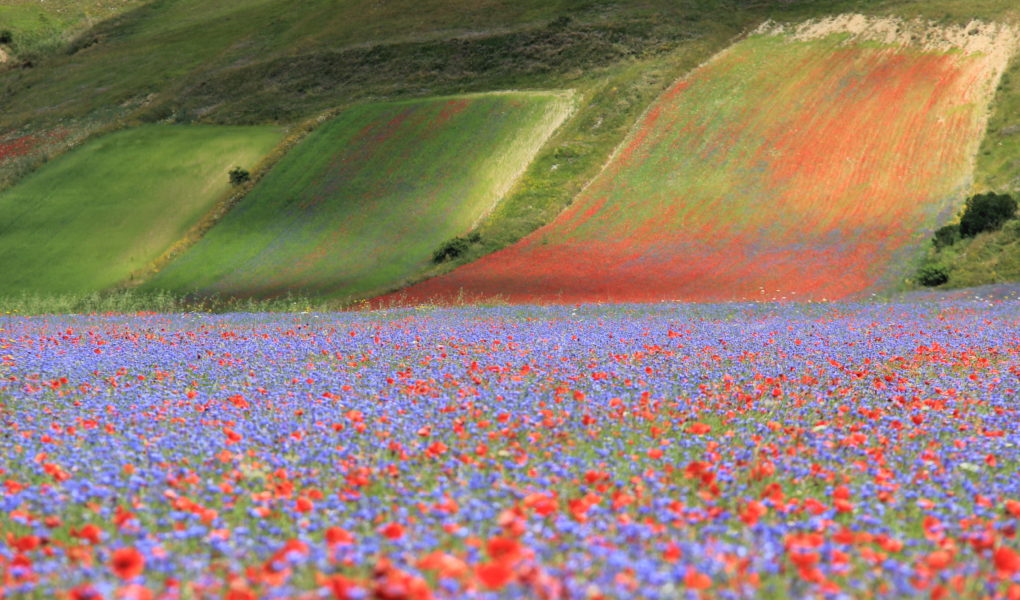
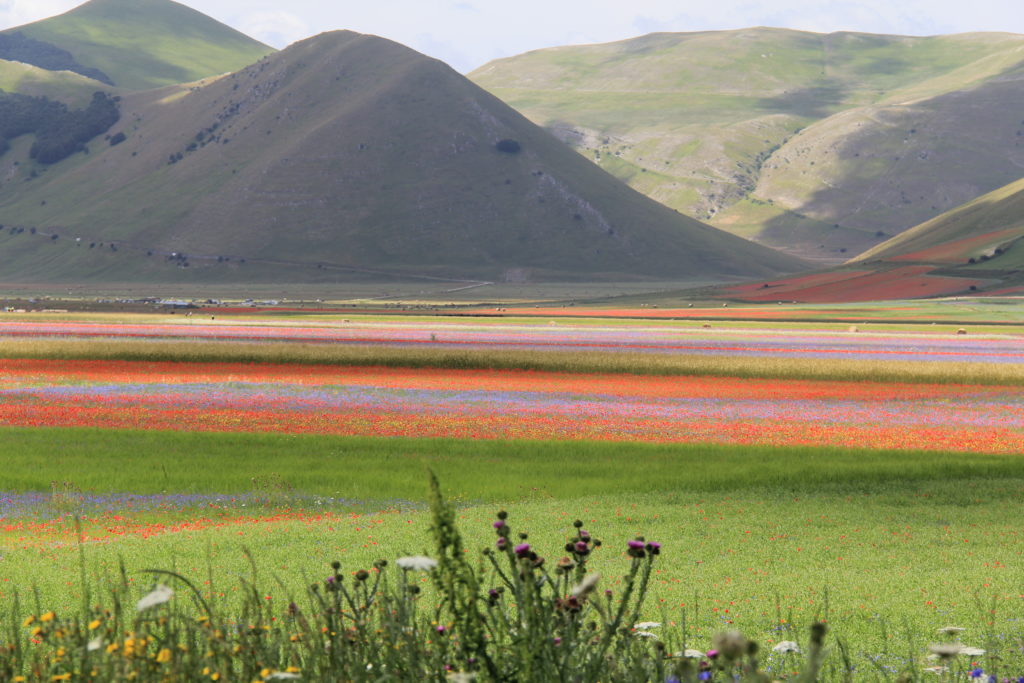
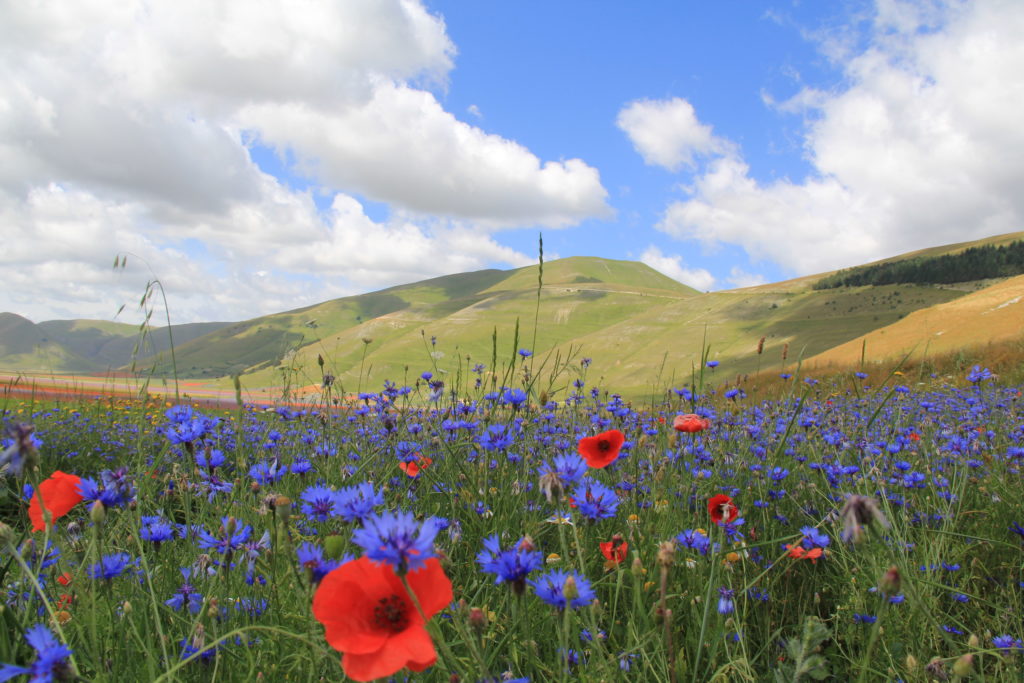
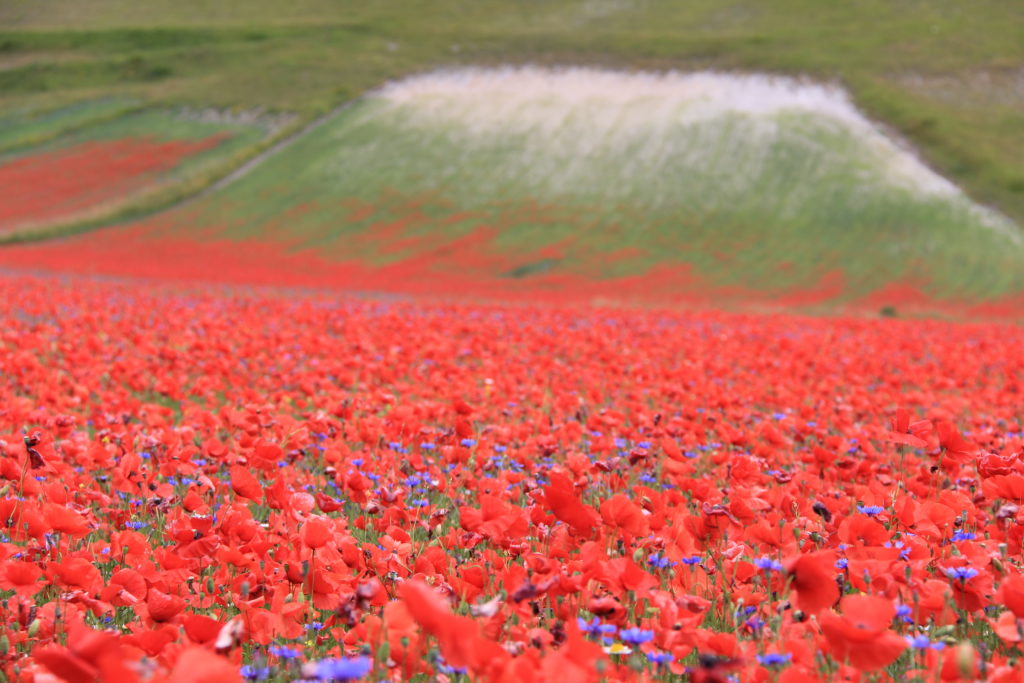
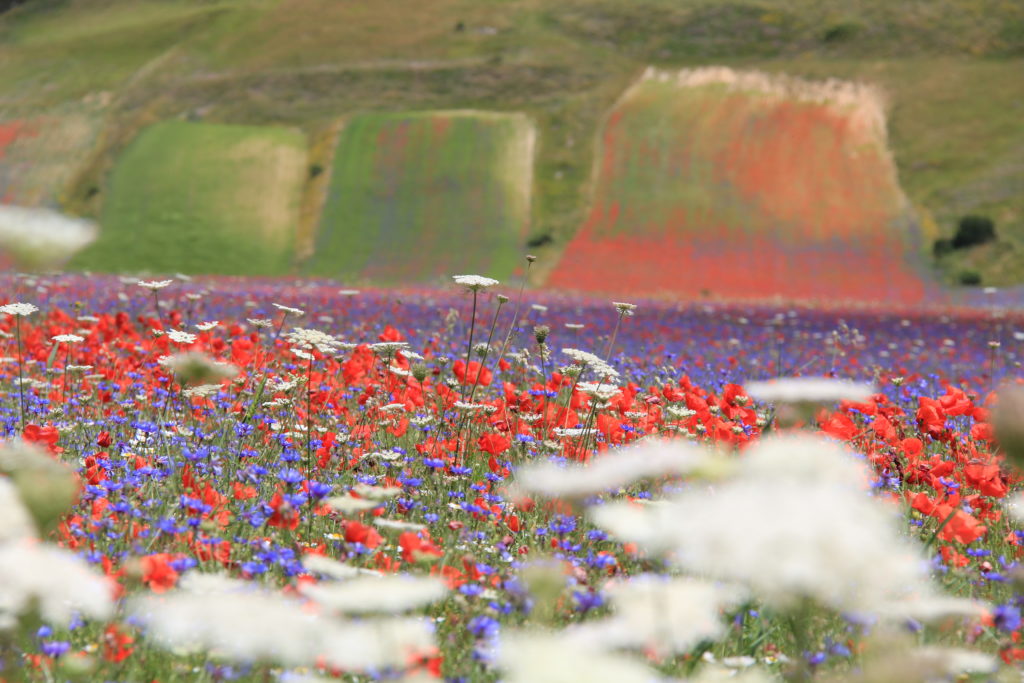

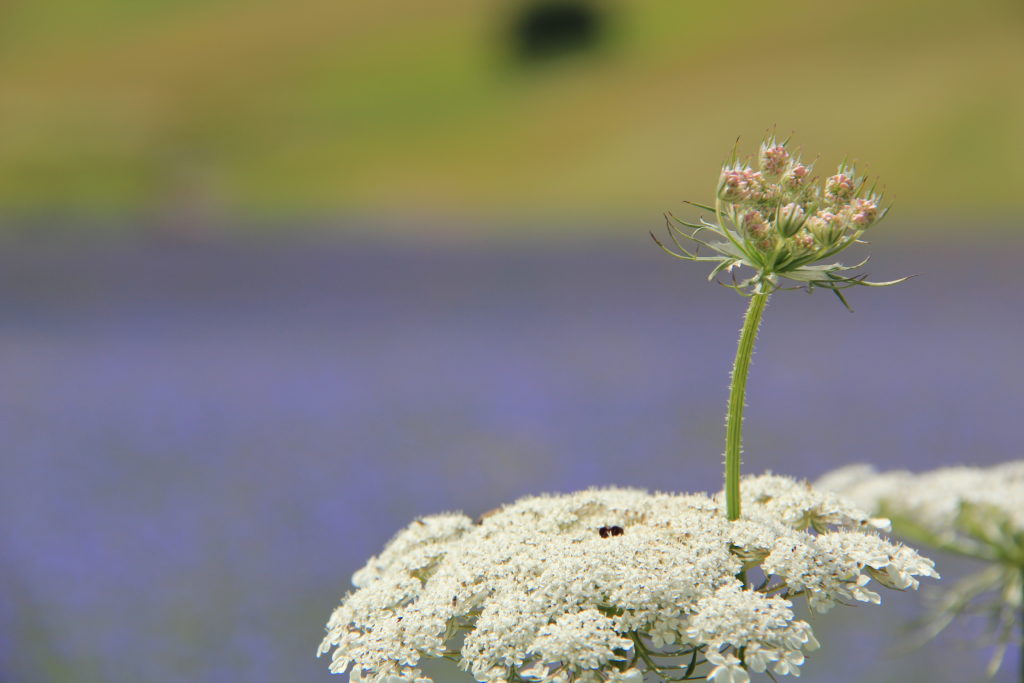
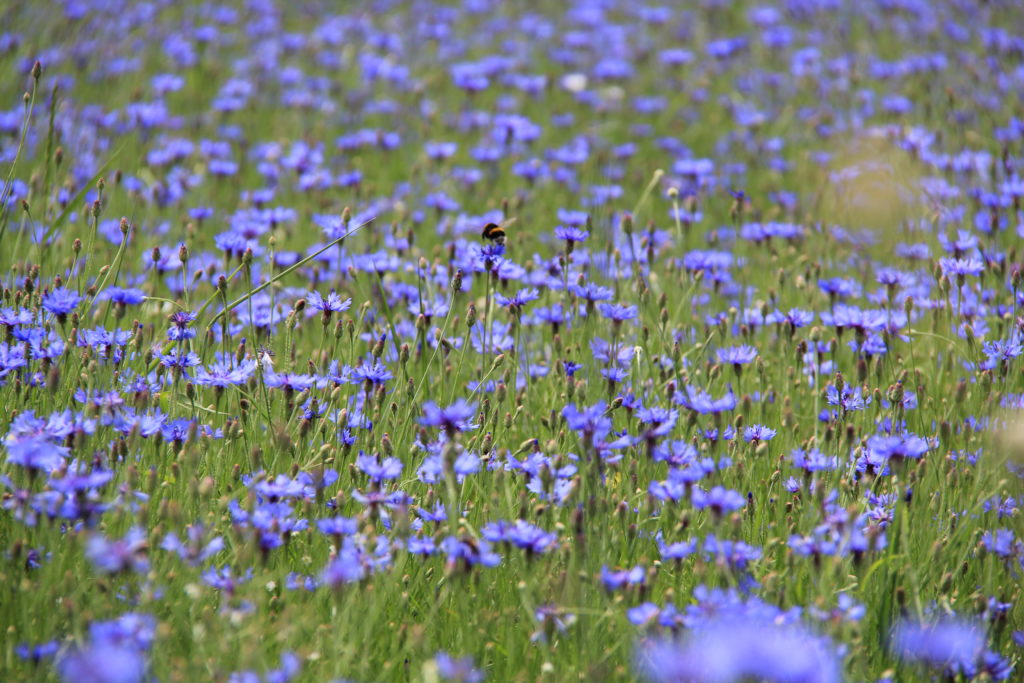
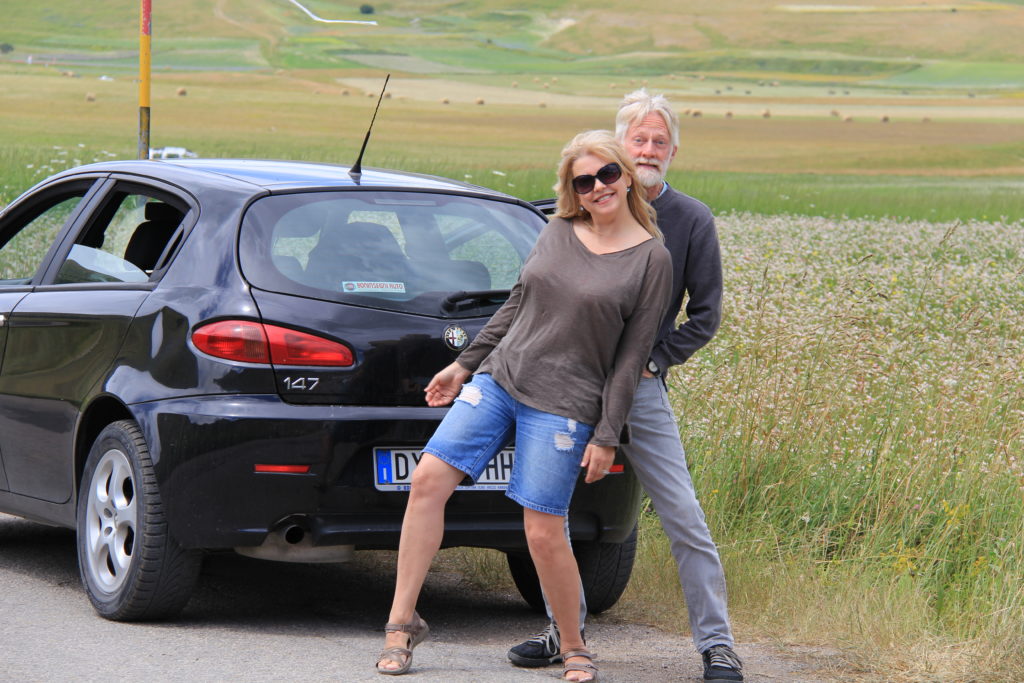
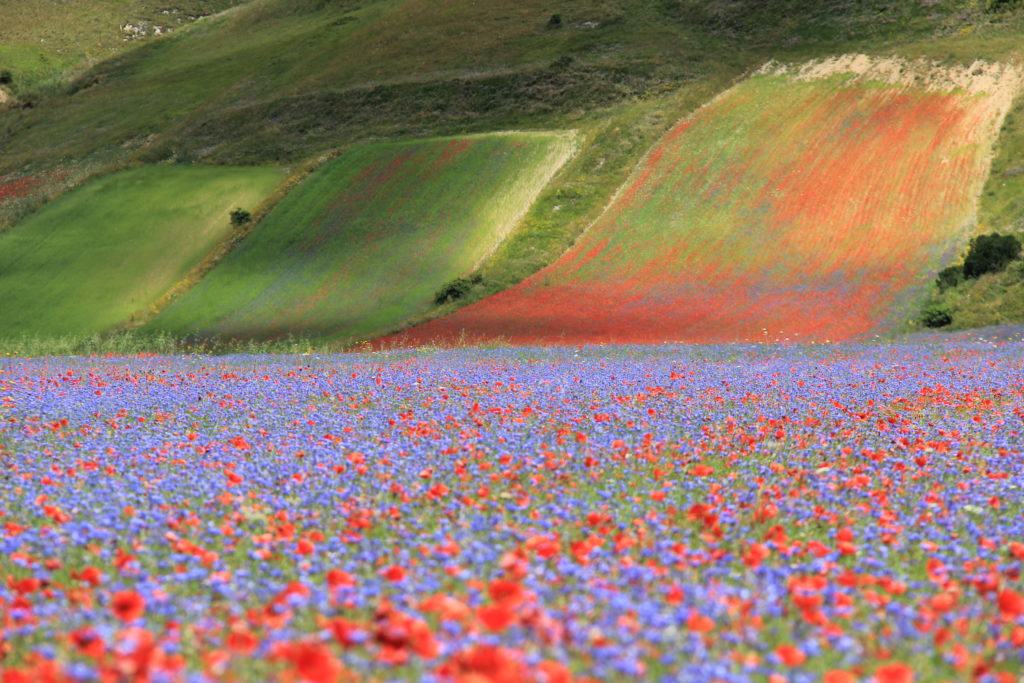
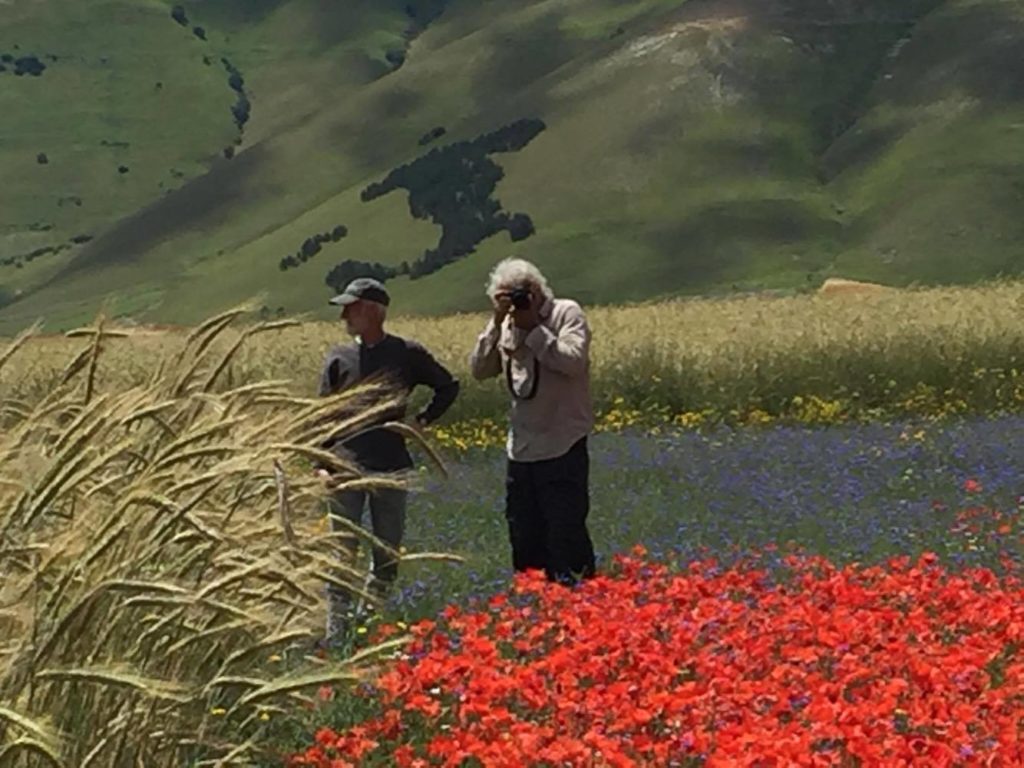
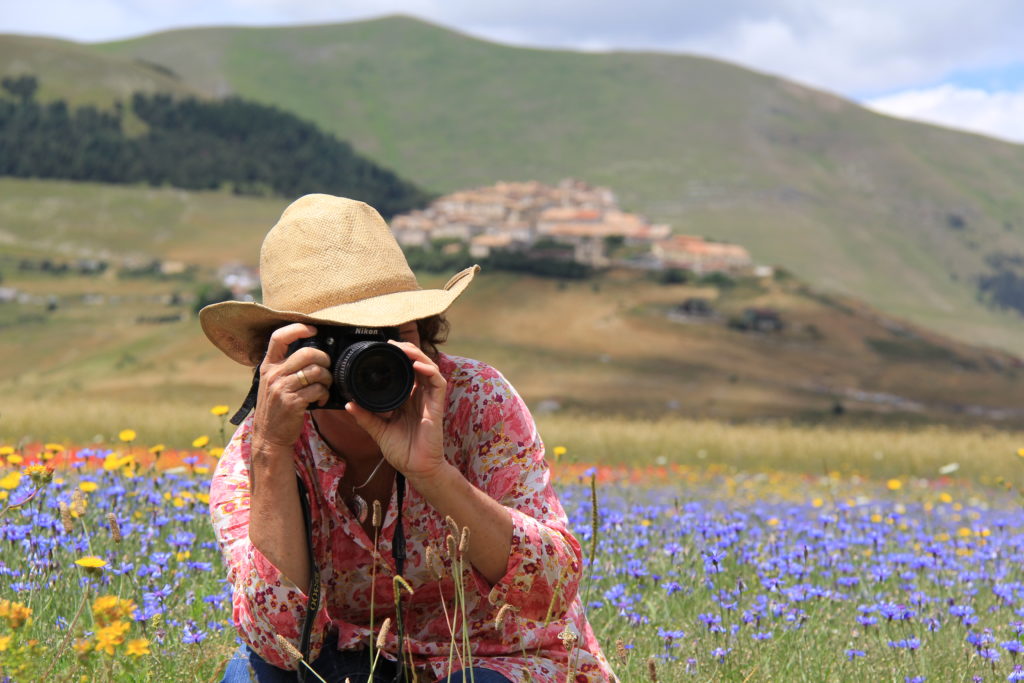
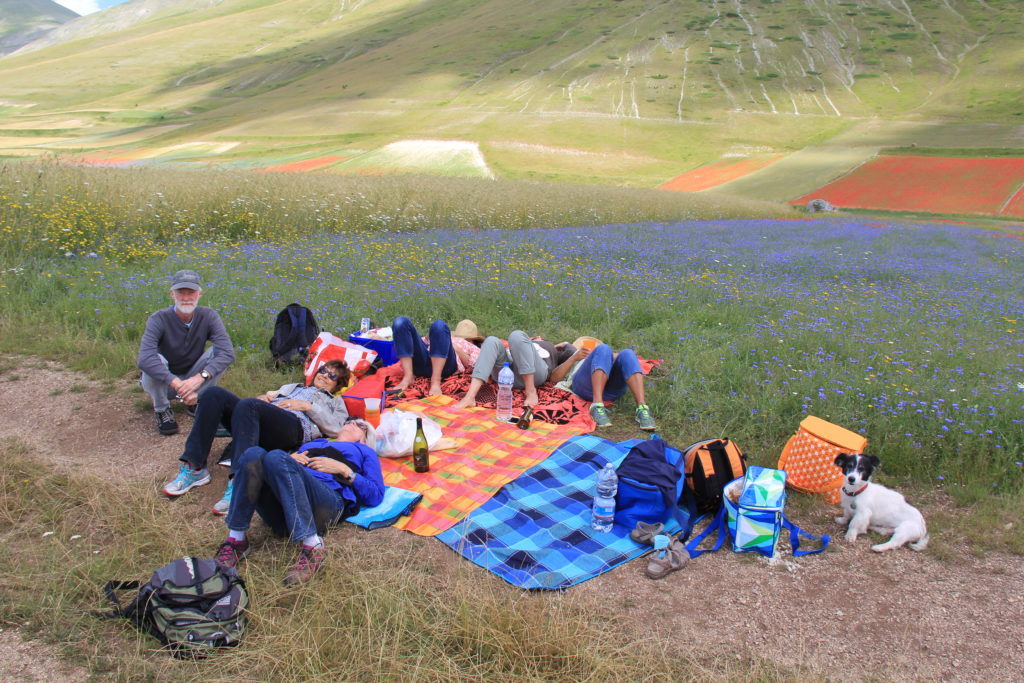
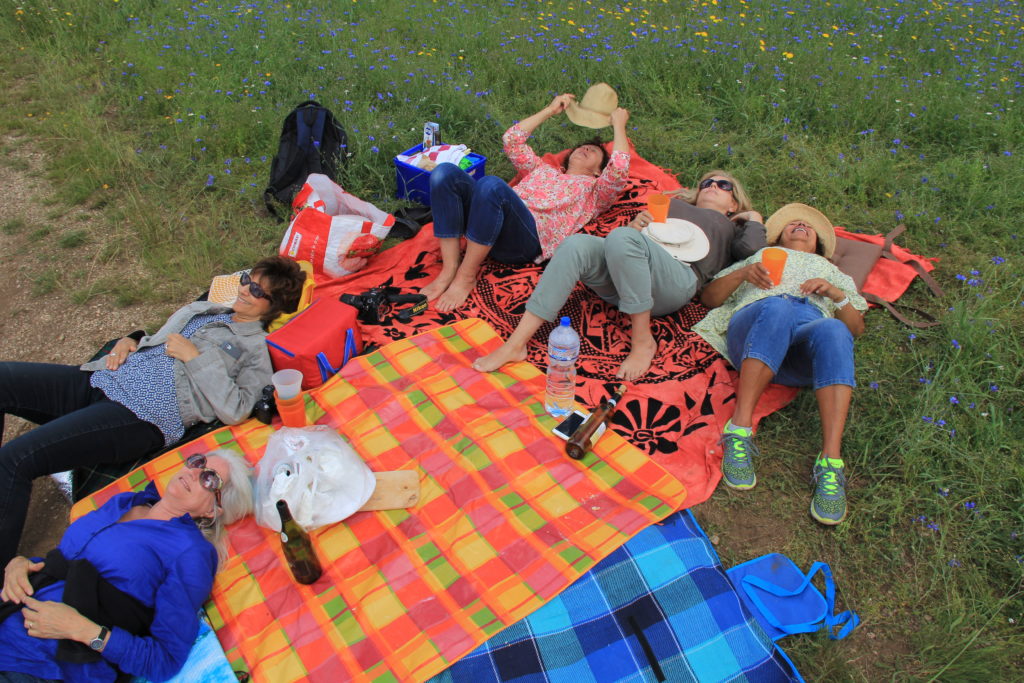
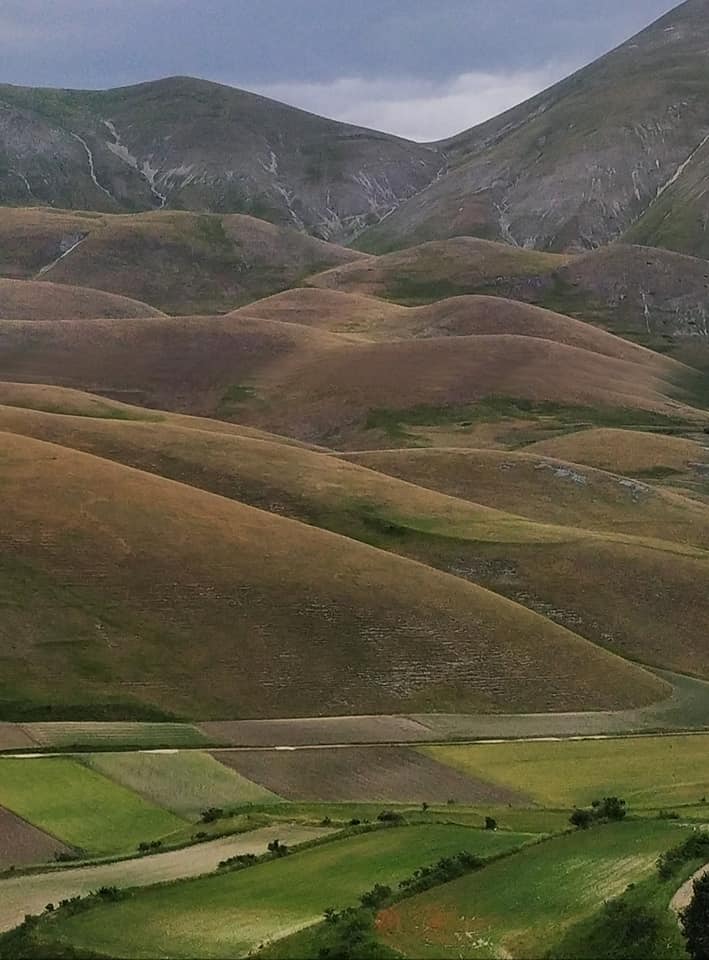

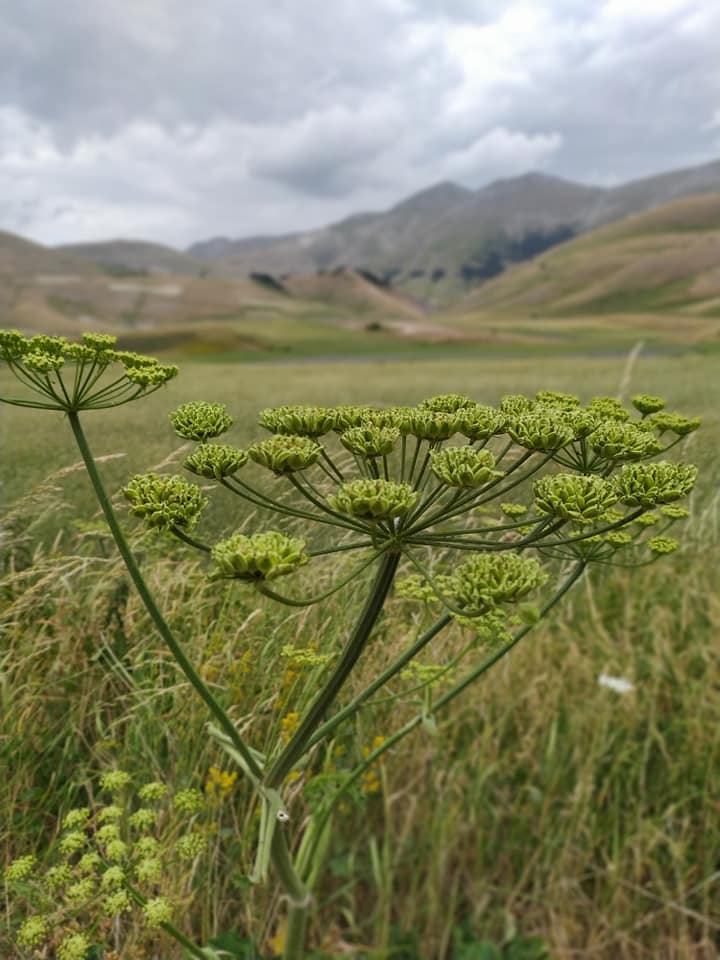
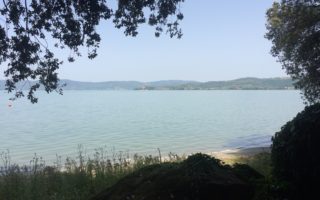
Well, that was beautiful and heart-breaking all at once. Umbria in its entirety is magical, but to have such a gorgeous gem tucked inside an already beautiful area is truly special. I hope they will allow those poor people back home to rebuild soon. I can’t imagine not being able to go home for three long years and counting.
This is such an interesting and moving account. What a beautiful place this was …. so devastating for the residents
Anna, that was beautiful. Very lovely to read and hope these people can get their town back and their homes one day.